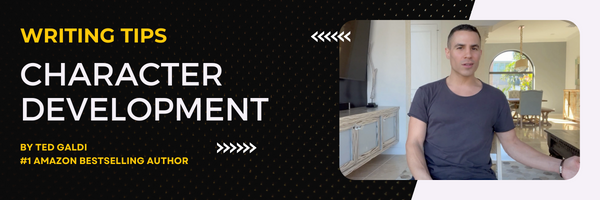Character Development: Definition and Tips for a Great StoryAre you writing a book, screenplay, or short story? You'll need great characters if you want your story to be memorable. In this post, find out what character development is and how you can use it to create compelling protagonists, antagonists, and allies. To outline an awesome story, download my FREE guide What is character development?Character development is the process of a writer expressing the physical, mental, and cultural traits of a character. A character's blend of traits should make him or her feel like a real, unique human being. The same definition holds for non-human characters, like talking animals in a fantasy story - the more human these animals feel, the better. Fictional stories rely on character development, as do narrative non-fiction ones. Even if a character in a non-fiction story is based on a real person, the writer still needs to develop that character so the audience can understand what that person is like. Examples of traits used in character development
Show vs. tell in character development"Show vs. tell" is a writing tactic that involves expressing information to the audience by showing that information in the world of your story instead of directly telling the audience it. Certain basic physical traits - like sex, age, and hair color - can be told to the audience. However, you should try to show the others. Showing creates a more engaging experience for your audience - they must actively observe your story world and come up with their own conclusions versus you directly telling them information. For example, let's say you need to get across the mental trait that Jimmy is a lair. Instead, of simply saying "Jimmy is a liar," write a scene where this information is expressed in a dramatic way. Here's a way to do that:
The choices characters make in private say a lot about who they are as people, ie, like Jimmy's choice to cheat on his wife. When at dinner with the group, Jimmy could very well come off like a loving husband. However, that would just be an act. Once he's alone, in the car, is when the true him emerges. When showing character traits, be sure to clearly distinguish between authentic traits and phony ones characters pretend to have for others. Making a character feel real and unique isn't enoughDeveloping a character simply means the character feels real and unique. That does not guarantee the character will be compelling. To create a compelling character, you need to give the character an intriguing blend of physical, mental, and cultural traits that grips the audience. Below are some tips for creating gripping protagonists, antagonists, and allies... Character development tipsCharacter development tips for your protagonist
Character development tips for your antagonist
Character development tips for your allies
Want to write an awesome story?Download my FREE outlining guide:
0 Comments
Leave a Reply. |


 RSS Feed
RSS Feed